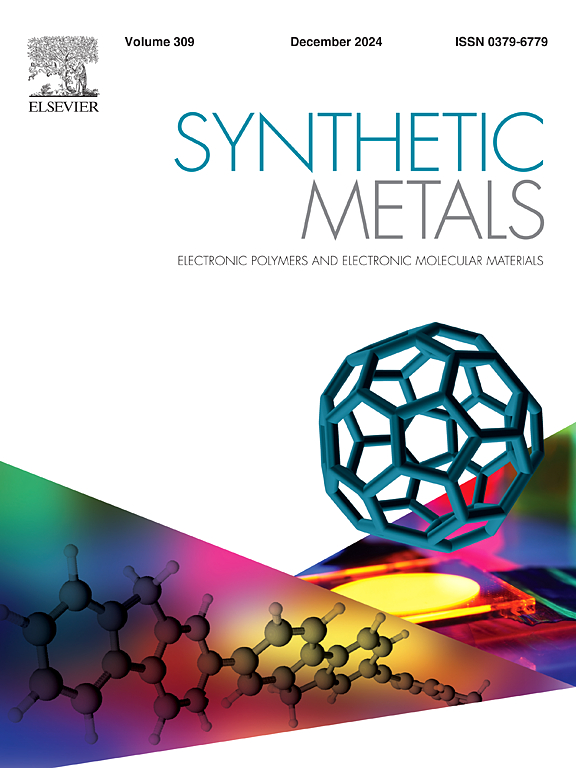碳纳米管/Ni(OH)2纳米复合材料透明膜在碱性电池中的应用
IF 4.6
3区 材料科学
Q2 MATERIALS SCIENCE, MULTIDISCIPLINARY
引用次数: 0
摘要
合成了一种由多壁碳纳米管(MWCNTs)和Ni(OH) 2纳米颗粒组成的纳米复合材料,对其进行了表征,并将其加工成薄膜,用于碱性电池阴极。采用改进的多元醇法进行合成,采用液-液界面途径(LLIR)制备薄膜,使薄膜沉积均匀。结构分析表明α-相Ni(OH)2纳米颗粒的形成,由于层间距较大,对电化学应用特别有利。与对照制备的纯Ni(OH)2(50-80 nm)相比,MWCNT的存在导致Ni(OH)2粒径(10-20 nm)显著减小,表明MWCNT诱导了成核效应。制备的纳米复合薄膜均匀性好,在波长550 nm处透光率为86.3 %,厚度为111 ± 28 nm。在1 mol L−1 NaOH溶液中的电化学测量显示,MWCNT/Ni(OH)2和Ni(OH)2薄膜具有类似电池的充放电行为。纳米复合材料获得了更高的比容量,在2.8 A g−1时达到~ 105 mA h g−1,在56 A g−1时达到~ 40 mA h g−1,这是由于电导率的提高和颗粒尺寸的减小。此外,MWCNT/Ni(OH)2表现出优异的充放电循环稳定性,在14 a g−1下,在2000次循环中保持了74 %的容量,而在8.2 a g−1下,Ni(OH)2控制膜的容量为65 %。这种高电流速率下的稳定性突出了MWCNT/Ni(OH)2纳米复合薄膜作为高功率储能和快速充电应用的有前途的候选者。本文章由计算机程序翻译,如有差异,请以英文原文为准。
Transparent film of carbon nanotubes/Ni(OH)2 nanocomposite for application in alkaline batteries
A nanocomposite composed of multi-walled carbon nanotubes (MWCNTs) and Ni(OH)₂ nanoparticles was synthesized, characterized, and processed into thin films for application as cathodes in alkaline batteries. The synthesis was carried out using a modified polyol method, and the thin film was prepared by the liquid-liquid interfacial route (LLIR), enabling uniform film deposition. Structural analysis revealed the formation of α-phase Ni(OH)2 nanoparticles, which is particularly advantageous for electrochemical applications due to the larger interlayer distances. The presence of MWCNT during synthesis led to significant reduction in Ni(OH)₂ particle size (10–20 nm) compared to the neat Ni(OH)2 prepared as control (50–80 nm), indicating a nucleating effect induced by MWCNT. The resulting nanocomposite thin film showed high homogeneity, an optical transmittance of 86.3 % at a wavelength of 550 nm, and a thickness of 111 ± 28 nm. Electrochemical measurements in 1 mol L−1 NaOH solution revealed battery-like charge-discharge behavior in both MWCNT/Ni(OH)2 and Ni(OH)2 films. The nanocomposite achieved higher specific capacities, reaching ∼105 mA h g−1 at 2.8 A g−1 and ∼ 40 mA h g−1 at 56 A g−1, due to improved conductivity and reduced particle size. In addition, the MWCNT/Ni(OH)2 exhibited a superior charge-discharge cycling stability, retaining 74 % of its capacity over 2000 cycles at 14 A g−1, compared to 65 % for the Ni(OH)2 control film at 8.2 A g−1. This stability at high current rates highlights the MWCNT/Ni(OH)2 nanocomposite thin film as a promising candidate for high-power energy storage and fast charge delivery applications.
求助全文
通过发布文献求助,成功后即可免费获取论文全文。
去求助
来源期刊

Synthetic Metals
工程技术-材料科学:综合
CiteScore
8.30
自引率
4.50%
发文量
189
审稿时长
33 days
期刊介绍:
This journal is an international medium for the rapid publication of original research papers, short communications and subject reviews dealing with research on and applications of electronic polymers and electronic molecular materials including novel carbon architectures. These functional materials have the properties of metals, semiconductors or magnets and are distinguishable from elemental and alloy/binary metals, semiconductors and magnets.
 求助内容:
求助内容: 应助结果提醒方式:
应助结果提醒方式:


